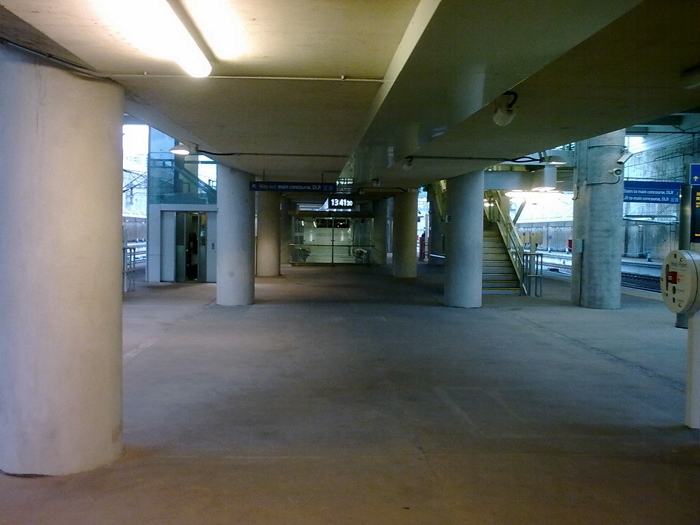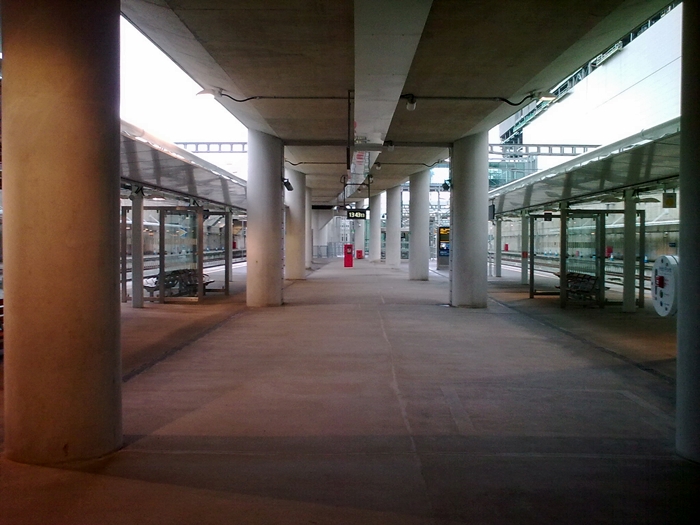
Stratford International
By December 1994, there were factions of Union Railways alleging that the Transport Secretary’s 1992 comments had simply been made to alleviate political unrest in marginal constituencies in Kent and South London, and that a Stratford International station had never been a consideration. Nevertheless, support for the site continued to gather momentum, with estimates suggesting that a station there could provide an additional £20 million of revenue per annum for the future CTRL operator. On 31st August 1994 the then Transport Secretary, Brian Mawhinney, confirmed that a combined domestic and international station would be provided at Ebbsfleet, but no site would appear at Rainham, and the decision on whether to build an additional intermediate station at Stratford would remain open until March of the following year. By this time, four bidding consortia had come to the fore: Eurorail; Green Arrow; London & Continental Railways; and Union Link. Their constituent companies are set out in the Ebbsfleet International section. The consortia were invited to submit bids to build and operate the CTRL, based on the following options:
Combined international and domestic stations at both Ebbsfleet and Stratford
A combined international and domestic station at Ebbsfleet, but only an international station at Stratford
A combined international and domestic station at Ebbsfleet, but no station at Stratford.
On 23rd November 1994, the Channel Tunnel Rail
Link Bill received its First Reading, and enshrined within it was the
requirement that a long open concrete box was constructed at Stratford. This
would provide an emergency exit from the CTRL tunnel and make space available
for crossovers between tracks. Furthermore, it would safeguard the site for a
Stratford International station; thus, should it later be decided to open a
station there after the CTRL had been built, much of the necessary
infrastructure would already be in place. At the time, Union Railways was still
advising the Government that the economic case for a station at Stratford had
yet to be made. The promoters for Stratford had to convince the bidding
consortia that a station here would generate more traffic for the CTRL, not
simply divert it from other stations, and that adding another intermediate
station would not reduce the route’s capacity. In the meantime, British Rail had
plunged the future of the 200-acre brownfield site into doubt, Railfreight
Distribution reviving plans for a new major freight terminal on the land.
By December 1995, the Stratford debate had still not been settled, but on the
20th of that month, the Government announced in the Commons that a decision on
whether to provide a station there now, would soon be made. It was made clear
that the possibility of having a station at Stratford had already been secured
in the Channel Tunnel Rail Link Bill, which stipulated the aforementioned
provision of a long concrete box. Whether there would be a combined domestic and
international station at Stratford, or just an international site, had yet to be
decided. Nevertheless, the four consortia, which were bidding for the tender to
build and operate the CTRL, were required to treat the provision of a long
concrete box as a minimum requirement. Originally, the Government had proposed
only to have a short concrete box built at Stratford; this would have met the
minimum safety requirements of the railway, but should a station later be built
there, the box would have required extending. Light was also shed on the cons of
opening an intermediate site at Stratford. Addition of another station en-route
would slow down services and negate the purpose of a high-speed line. More stops
would mean less line capacity, and possibly less – not more – revenue generated
for the CTRL operator.
The 29th February 1996 was a big day for the CTRL as a whole, and an important
occasion for Stratford. At 10:00 AM that morning at Waterloo station, the then
Secretary of State for Transport, Sir George Young, announced the winner of the
bidding process. London & Continental Railways (LCR) had been awarded the
contract to build and operate the CTRL, and with hindsight, the proposals made
for very interesting – and optimistic – reading. A combined domestic and
international station at Stratford was formally confirmed, and this would be
built concurrent with the rest of the CTRL. In addition, £3000 million worth of
Government assets were to be transferred to the winning bidder:
· European Passenger Services (EPS): This incorporated both the ''Nightstar'' and ''Eurostar'' operations, including £318 million worth of rolling stock
· Union Railways: The British Rail subsidiary which had previously been established to plan and build the CTRL
· Waterloo International: The existing Eurostar terminus in the capital
· North Pole Depot: The existing heavy repair and maintenance depot for Class 373 sets
· St Pancras: The proposed, and final, London terminus for international services
· Kings Cross Peripheral: Land alongside the two famous termini, required for the CTRL construction
· Stratford Railway Lands: A 120 acre area in the vicinity for the construction of the Stratford International complex
27th December 2009

Looking west, we see - in the background - the single tunnel bore of the ''up'' line, and a dip in the tracks at the end of the platforms. On the right is the concrete wall of the elevated spur to Temple Mills. © David Glasspool
27th December 2009

The Temple Mills spur runs virtually the entire length of the island platform, and in the process provides protection from the elements. An eastward view upon the island shows the spur running above, an enclosed glazed waiting room, this of which is flanked to its left and right by a lift shaft and a staircase respectively. © David Glasspool
27th December 2009

Now beyond the waiting shelter, the Temple Mills spur climbs higher in the air, and is flanked either side by canopies. Olympic development is ongoing, as seen to the right (south), and at present, passengers can only traverse between Stratford International and Domestic stations by means of a dedicated bus service. © David Glasspool
<< Previous Next: The History Continues >>
Return to the Kent Rail Homepage or alternatively, check for Updates.
Website & Copyright information - Links - Contact the Webmaster
All content is copyright © David Glasspool unless otherwise stated